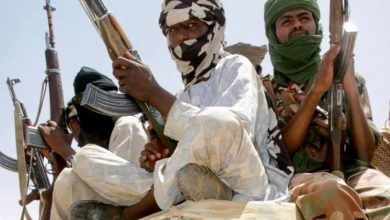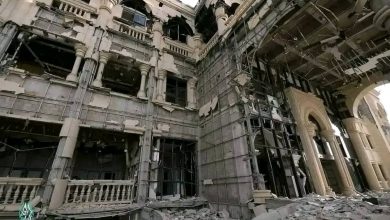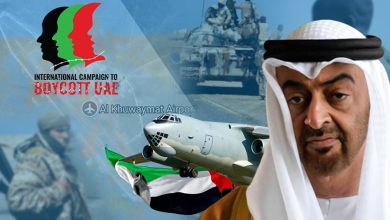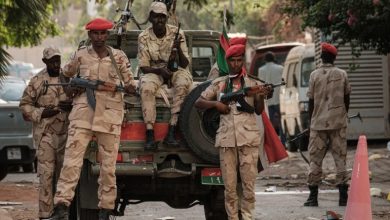Anniversary of the April War: Sudanese Sites and Figures That Made a Mark
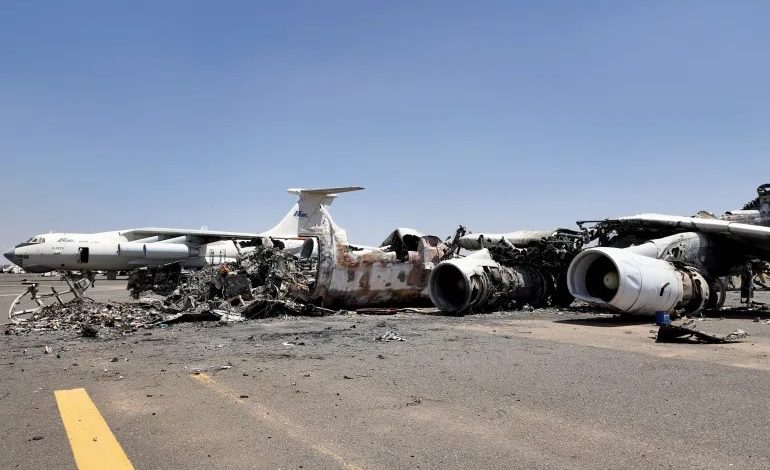
Report by: Abdelraouf Taha
Two years into the conflict between the Sudanese army and the Rapid Support Forces (RSF), certain military and civilian locations have become etched into the memory of Sudanese people. These sites came to symbolize the critical zero hour of the war that broke out at dawn on April 15, 2023, serving as landmarks for all who witnessed the beginning.
Sports City
Just days before the war, the RSF had established a military base in the Sports City, deploying dozens of combat vehicles, thousands of soldiers, and heavy weaponry.
Originally established during the former regime, Sports City is located 7 kilometers south of the army’s General Command Headquarters in Khartoum and spans 10 square kilometers. It became a military zone crowded with tanks, armored vehicles, and soldiers. Most accounts suggest that the first spark of the war ignited there.
A Sudanese army source told Al Jazeera Net that, while stationed near the General Command, they received reports of clashes between the RSF and the army in the vicinity of Sports City, which is located just a few kilometers from Khartoum Airport, and the fighting quickly spread there.
He added that within half an hour, RSF units stationed at the residence of their leader, Mohamed Hamdan Dagalo (Hemedti), opened fire on army guards near the General Command. The clashes soon engulfed the entire city of Khartoum.
For two years, the RSF continued to use Sports City as a base, including a mobile field hospital for evacuating the wounded—until the army recaptured the area at the end of March.
Presidential Guard
The “Presidential Guard” is a unit under the Military Intelligence of the Sudanese army tasked with protecting sovereign figures and high-profile foreign dignitaries. Located southwest of the army’s General Command in central Khartoum, it housed around 600 soldiers and officers under the command of a general-ranked officer.
According to a source from the Presidential Guard, during the initial hours of the war, the unit played a key role in preventing RSF forces from breaching the army headquarters.
Meroe Airport
A source from the guard told Al Jazeera Net that at around 9 a.m. on April 15, 2023, RSF units launched an attack from the Airport District on the entrances and gates of the Presidential Guard.
He explained that the guard’s first priority was securing the top military leadership present there. “We successfully secured the Chairman of the Sovereign Council and army commander, General Abdel Fattah al-Burhan, along with his deputy, General Shams al-Din Kabbashi, placing them in a safe location,” he said.
“We entered fierce battles with the RSF, who attacked the western gate with over 200 combat vehicles armed with various weaponry. We inflicted losses and thwarted their attempts to breach the General Command, which lasted for three days,” he continued. Eleven Presidential Guard members were killed in the first few hours.
Meroe Airport
Located in the northern Sudanese city of Meroe, the airport includes a military base that housed a fleet of fighter jets. On April 13, 2023, the RSF dispatched large reinforcements there without coordinating with the army, according to a statement by the army spokesperson.
“The airport became a hub for military mobilization—with both the army and its 19th Division based inside, while the RSF spread around its perimeter.”
Within 48 hours, fierce clashes erupted between the two sides. The RSF initially captured the airport, but the army soon reclaimed it and expelled the RSF, announcing their full withdrawal from Meroe. However, this came at a cost, with significant destruction to the airport’s infrastructure and aircraft.
Mount Surkab
Mount Surkab lies northwest of Omdurman, near key military bases in Wadi Seidna, including the 9th Division, the Wadi Seidna Air Base, and the Marakhiyat Camp. According to a military source, the RSF used the mountain as a base for elite units.
A source from the Wadi Seidna Air Base told Al Jazeera Net that in the early hours of the war, the RSF aimed to seize control of the base and disable air operations—similar to what happened at Meroe Air Base.
On day one, RSF attempted to attack Wadi Seidna, but the army repelled them. On the second day, the army bombed the RSF base at Mount Surkab using aircraft and heavy artillery, inflicting heavy losses.
Hemedti later announced that over 4,000 RSF troops were killed in the Surkab base during airstrikes, later blaming a foreign country for the attack. Eventually, the army took full control of the base.
Prominent Figures
Several individuals became symbolic figures during the ongoing war, including Major General Nader Mohamed Babiker al-Mansouri, commander of the Presidential Guard.
Al-Mansouri graduated with the 40th class of the military academy and served in various branches, including artillery, armored units, and military intelligence. He was deployed across northern, western, and eastern Sudan.
At the war’s outset, he led the Presidential Guard in preventing the RSF from storming army headquarters and capturing al-Burhan. He then secured front-line military leaders.
Just two days before the war, videos circulated showing al-Mansouri instructing his soldiers to prepare for an imminent battle. Recently, sources reported that he was reassigned to oversee training at Military Intelligence instead of leading the guard.
The General Command remained the main battlefield, where every officer and soldier bore arms to repel the RSF. Among the high-ranking officers was Major General Hussein Ardeeb, commander of Reconnaissance Forces.
Sources from army leadership told Al Jazeera Net that Ardeeb led his troops in fierce battles east of the General Command, which was under heavy RSF assault from the Safa District in eastern Khartoum.
He remained stationed east of the command until he was killed by an RSF sniper. In his memory, the army named a military convoy after him, which later participated in retaking control of central Omdurman.
Source: Al Jazeera Net
